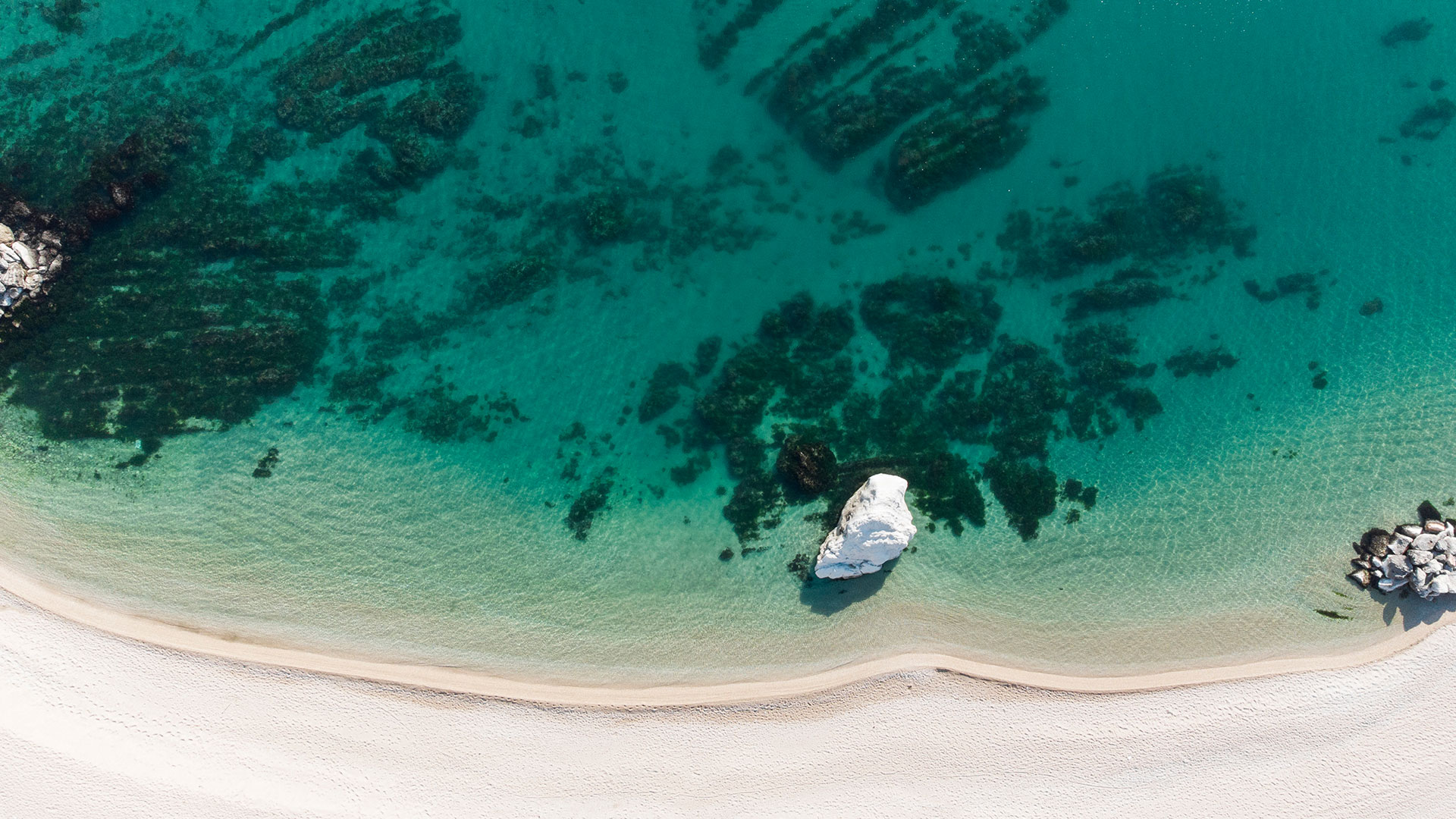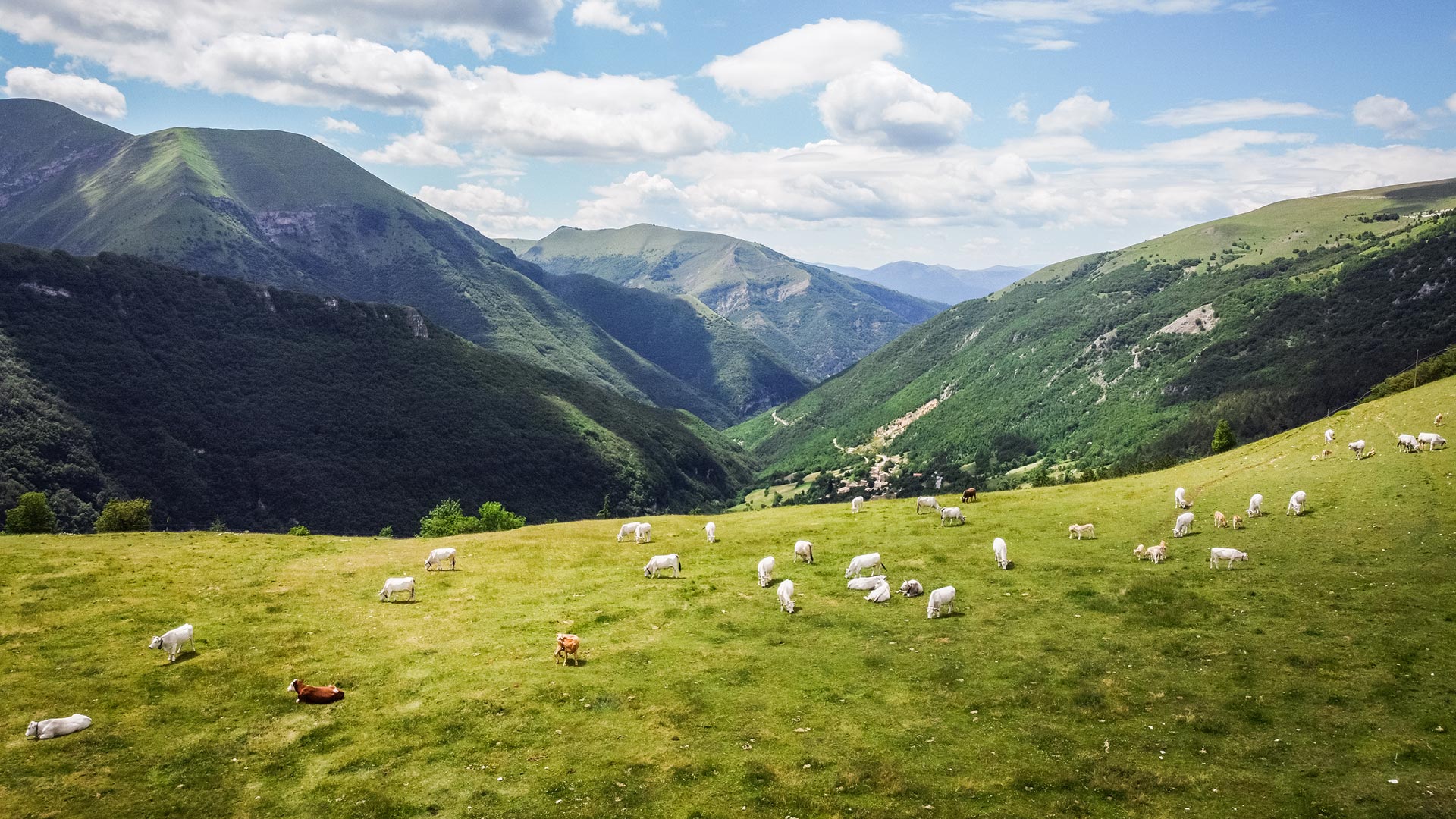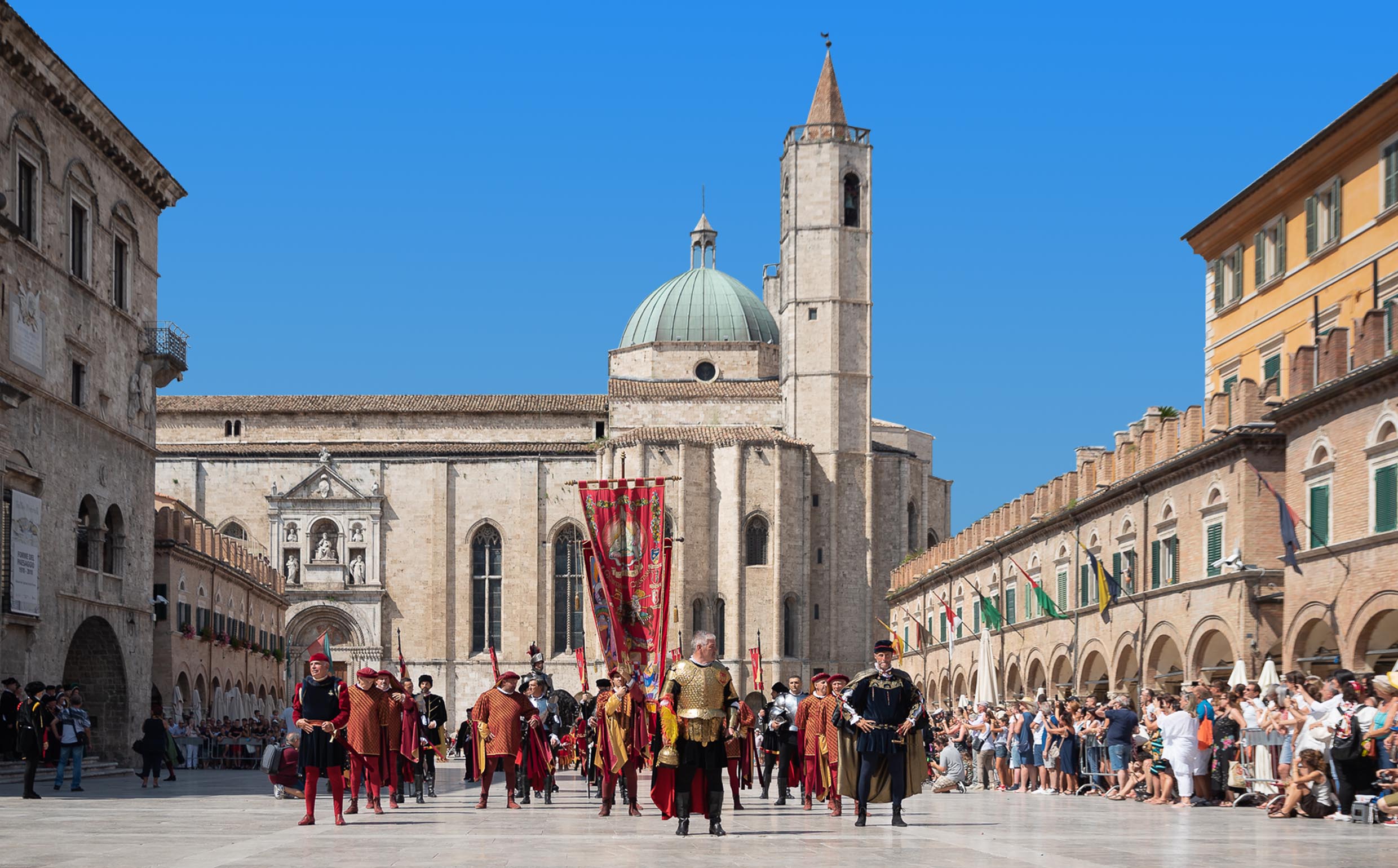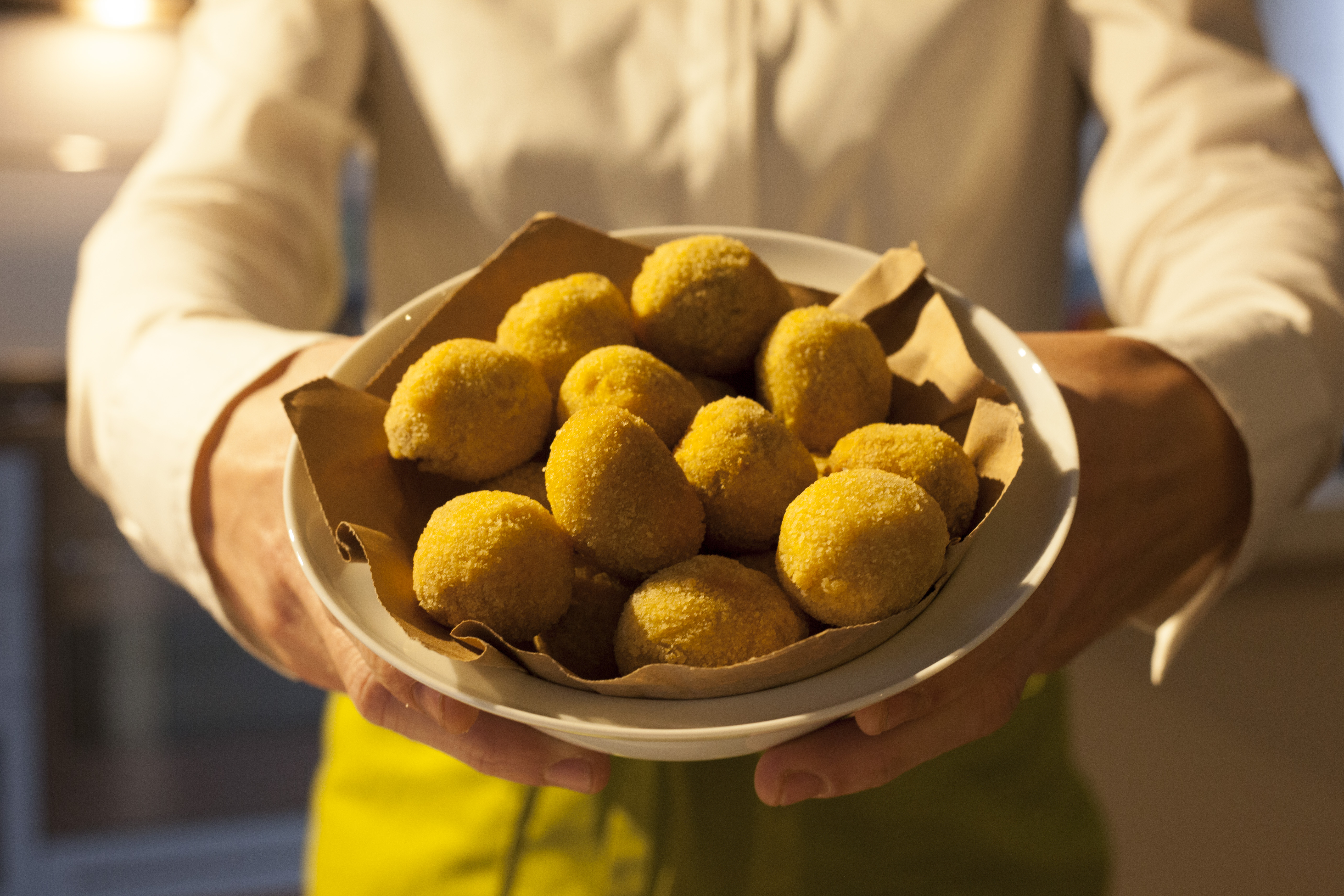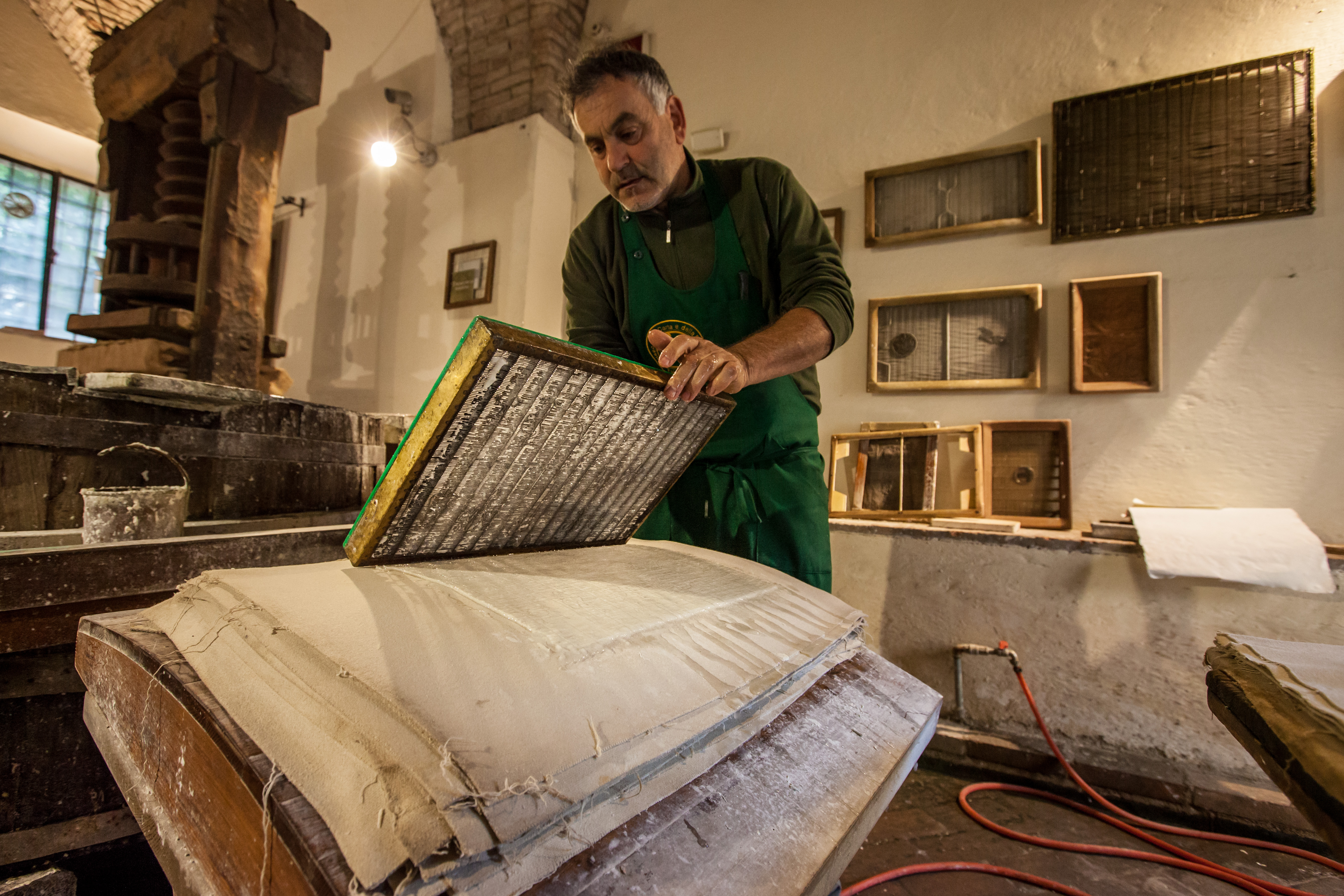National Park of Sibillini Mountains - Marche Tourism
Back National Park of Sibillini Mountains
National Park of Sibillini Mountains
The National Park of Sibillini Mountains covers an area of 70.000 hectares of protected land. It was established in 1993; the towns included in the park are: Amandola, Arquata del Tronto, Bolognola, Castelsantangelo sul Nera, Cessapalombo, Fiastra, Montefortino, Montegallo, Montemonaco, Valfornace, Pieve Torina, San Ginesio, Ussita, Visso.
The Monti Sibillini National Park has obtained postive evaluation by Europarc Federation ; therefore it is officially recognized by the European Charter for sustainable tourism in protected areas.
The great limestone massif that stands in the southern Marche includes one of the highest peaks on the Italian mainland - Monte Vettore at 2,476 metres - and the wild tarns and windswept high plains of the Monti Sibillini provide some of the Marche's most spectacular landscapes.
Established in 1993, the National Park of Sibillini Mountains covers an area of over 70,000 hectares of protected land. This chain of mountains is chiselled by glaciers and limestone erosion; the traces can ben recognized in Mount Vettore, Mount Bove, the Ambro Valley , Tela Valley (Mount Rotondo) and in the underlying U-shaped valleys.
Karst phenomena is particularly evident all around the area.
The Park possesses some outstanding natural sights , including the vast upland plains which are a mass of flowers in spring. The most impressive is Piano Grande below the village of Castelluccio, famous across Italy for its lentils. In May and June, this huge expanse of treeless plateau, 1250 mts above sea level, eight kilometres long and five wide, is transformed into a carpet of wild flowers. Among the poppies you'll find wild tulips and exotic alpine flowers such as carex buxbaumii.
Different types of trees can be found in the park : the oak, the hornbeam , the beech , but also natural pastures with very rare and valuable species such as the edelweiss of the Apennines and the willow dwarf, that is considered the world's smallest tree. The fauna is also varied; there are different mammals, such as the wolf, the wild cat, the hedgehog, the roe deer; some birds populate the park too: the golden eagle, the goshawk , the sparrow hawk and the peregrine falcon.
In the Middle Ages the Sibillini Mountains were known in Europe as a kingdom of demons, necromancers and fairies. There are many legends on the Sibillini area that have been handed for centuries: the mountains take their name from a legend that one of the sibyls - the prophetesses of classical mythology - hid here in a cave on Monte Sibilla known as the Grotta delle Fate (Cave of the Furies) when she was chased out of the underworld. We must also mention the legend of "Pilato", according to which the dead body of the famous Roman procurator was dragged by a team of oxen into the reddish waters of the "demonic" high tarn. The lake is also the only place in the world where you'll find Chirocephalus marchesonii, a pink crustacean that swims belly up.
Nearby is the Gola dell'Infernaccio, an awe-inspiring gorge carved through the rock by the river Tenna. On the flowery slopes of the park , especially in sumemrtime, you can admire the Ragnolo meadows, full of splendid blooms of orchids, liliaceae and other interesting species, such as the Orsini fritillary, the narcissus or the alpine star; the valley of Fiastrone is also impressive, as it is a gorge carved by the waters where Grotta dei Frati, an ancient and evocative hermitage of the Clareni monks of the year 1000, is located. Climbing up the river, near Lake Fiastra, you can reach the Acquasanta valley with its splendid waterfalls and the Bear's cave, a toponym documenting the presence of bears in the past.
The Park dwellings and the Environmental Education Centers provide tourist information service. A wide range of activities can be made: hiking tours, horseback riding, mountain biking, hang-gliding or paragliding, rock and ice climbing, skiing, sightseeing in towns of the Park. There are also food and wine tours; you can taste all specialties and delicalicies of the area.
After the earthquake occured in 2016, we indicate the risks along the paths of the park (ref. Monti Sibillini National Park Authority Press release no. 21/16 dated 12 Dec 2016)
Mount Vettore from Forca di Presta with visit at Castelluccio di Norcia: the streets leading to Forca di Presta are temporarily closed to transit and the entire area of Castelluccio is red zone. Access is available under permission.
Mount Sibilla: access to Mount Sibilla is not banned.
From Valle dell'Infernaccio the Church of Padre Livini (The Mason of God) from Rubbiano: access to the Infernaccio Valley and to the hermitage of San Leonardo is forbidden under the order of the Mayor. The route has been damaged by very large landslides.
Frome Foce the path that leads to the Palazzo Borghese: the municipal road leading to Foce di Montemonaco is closed to vehicular and pedestrian traffic under the order of the Mayor.









